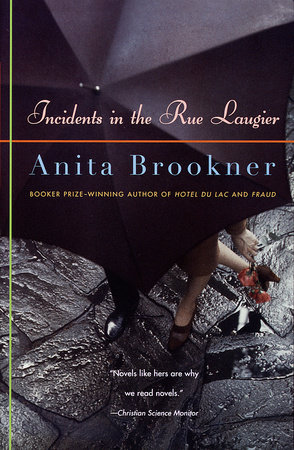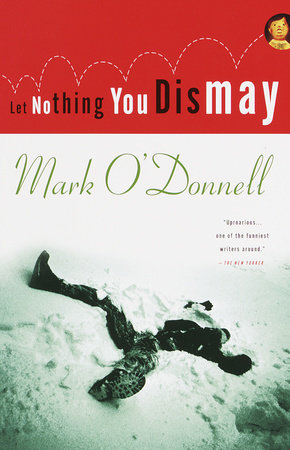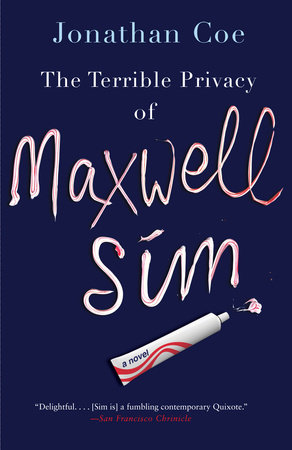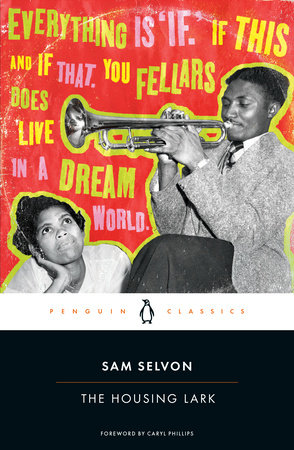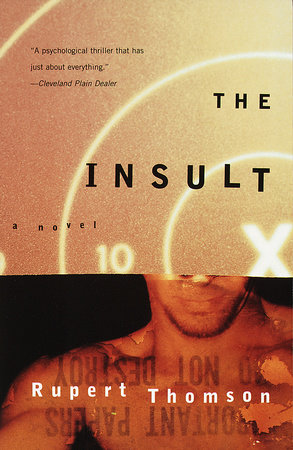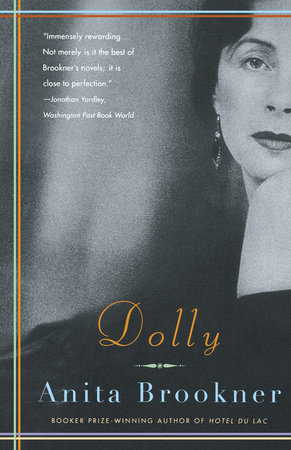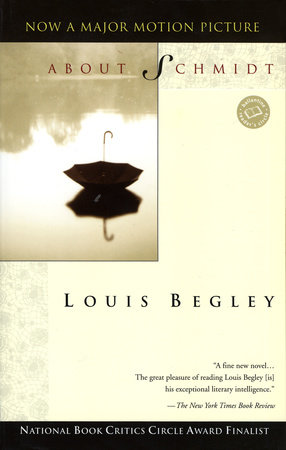A Conversation with CARYL PHILLIPS
Q: How did you become interested in Bert Williams’s story?
A: About ten years ago I came across a reference to Bert Williams in a book I was reading. I was immediately fascinated by the notion of a black performer who blacks up to go on stage. I had recently finished a long essay about Marvin Gaye (published in A New World Order, 2001) in which I had explored the stereotypes that bind black performers in America. This early twentieth-century entertainer seemed to be constrained by some of the same anxieties that informed the life of Marvin Gaye, and they both died sad, tragically early deaths.
Over the years I began to collect a file of information about him–odd articles, references from books, etc. Then, a few years ago, I realized that I would have to write about him, for he would not let go of me. This also coincided with a growing interest I had in how hip-hop performers in particular were presenting themselves (and being presented) to the wider American audience. There seemed to be an aspect of performative minstrelsy to some of their work. This all made me think increasingly about Bert Williams.
Q: You quote parts of dialogue from the plays in the book and contemporary newspaper reports–are these from historical records? You have really brought the characters to life in this book and I have to keep reminding myself it’s a novel. How much of the story is drawn from your imagination?
A: The book is drawn from my own imagination. The very short extracts from the plays and some of the newspaper reports are totally factual–but they exist just to give a kind of tantalizing factual flavor to the novel. However, who these characters are, and how they thought, act, felt, suffered, loved and lost, all of this had to be felt and imagined. In many ways, this was an extremely difficult novel to write for I had to keep reminding myself that fiction is one thing, and documentary something completely different. I soon grew to understand that I had a keen responsibility to imagine into the deepest recesses of these colored people’s lives even if what I subsequently discovered was not particularly palatable.
Q: Midtown New York has changed dramatically over the 90 years since Bert Williams and George Walker starred on Broadway–there isn’t an elevated train on 53rd Street anymore for one thing–but how do you think Harlem has changed? Is Bert’s townhouse still standing?
A: Harlem has changed dramatically since Bert Williams’s time. For the first two decades of the twentieth century, Harlem represented great hope for black America. It was the place where it was possible to own a house. It was a district where it was highly unlikely that one would be moved on if real estate speculators decided to gentrify the neighborhood. There was stability, and possibility. With the twenties and thirties came the real rush of black migration from the south, and the rush of white migration from downtown Manhattan. Harlem became culturally richer, but economically poorer. The place also began to lose some of the respectable black middle class gloss that had characterized its early days. I think Bert Williams would have been disappointed by this Harlem.
Today, Harlem is being gentrified, and after one hundred years black people are being “bought out.” Columbia University has just announced plans to build its West Harlem campus, and in other parts of the neighborhood, house prices are rocketing. It’s an old process, but at least there has been approximately a full century of black “stability” in Harlem. Bert Williams’s townhouse is still standing. It’s today divided into apartments. The ground floor is a beauty salon. There is no plaque or marker or anything to suggest that this is where the great man lived.
Q: I wanted to cry in sympathy for Bert’s wife, Lottie, and not just in sorrow for her ruined hair. Her disappointment and sadness are tangible every time she goes to bed with her husband. I felt similarly for Dorothy in your last novel, A Distant Shore. Would you be revealing a trade secret if you talked about how you create these fantastically lifelike women?
A: People have told me that I have a special empathy for writing about women. I never begin a novel with this in mind. I hope to breathe life into all the characters, irrespective of gender, race or class. However, I’m happy if the characters come over sympathetically. In this novel, I have to say that I felt a special sadness for them all. In A Distant Shore, it would be true to say that–perhaps surprisingly–Dorothy’s plight is, in some ways, more heartbreaking than Solomon’s.
Q: Early in the novel, you describe Bert and Lottie walking on 51st Street and Broadway when someone shouts “niggers” at them. This word becomes a “missile” that ricochets back and forth across the street–a superb image. When thinking about verbal racism do you disagree with the old saying: “sticks and stones will break your bones, but words will never hurt you”?
A: Actually, I don’t think it’s true that verbal insults don’t damage. I think they can wreak an incredible amount of havoc on one’s sense of oneself. Most people have to absorb these insults as youngsters when they are not fully equipped to deal with them. And they are often compounded by society’s dim view of who you are. Racial insults do damage, which is why people employ them with such vigor and relish. It takes a particularly strong-minded, or self-confident, person to know how to handle them. At the point in the novel that you refer to, Bert and Lottie are in love, and their “progress” as a couple is not going to be railroaded by anything, including this potentially hazardous obstacle. At other points in the novel, such insults cause great harm to individuals, including Bert and George.
Q: Early in his career, Bert Williams made the decision to wear cork on his face and
play “a shuffling, dull-witted, clumsy, watermelon-eating Negro of questionable intelligence.” He considers it his stage make-up and what he needs to wear in order to give the white theater-goers the character they want to see. Why do you think he continued to wear cork when he knew he was alienating and disappointing African Americans (including his own family) and reinforcing a racist stereotype?
A: I think that it is possible for all of us to become trapped by the image that we construct for ourselves. Either we’re the cool one, or the joker, or the clumsy one. When that image is reinforced by society, and then “legitimized” by economic reward and fame, it’s difficult to turn one’s back on it. It is easy to convince oneself that people’s objections to your “identity” are rooted in envy or jealousy, and to just dig one’s heels in further. I think some of the above played into Bert’s decision to continue wear cork. There was, of course, the other factor, which is that at this time there was no other viable role for him to play. Either he conformed to a certain stereotype or he was likely to become marginal or ostracized. His experience in film, where he tried to present a character without make-up and the resulting film caused a riot, showed him how precarious his situation was. Towards the end of his life black people began to be thought of as actors, as opposed to clownish performers. But by then it was too late for him. He was trapped with the role that he had created for himself, and which had been further inscribed for him by his American “audience.”
It would have been as difficult for him to “break” from his role, as it would be for say P. Diddy or Snoop Dogg to don a tuxedo and start a regular gig at The Carlyle. The audience members know what they want from performers, and if they’re black I think the obstacles to radical reinvention are even higher.
Q: I love the image on the book jacket. Among other things, the mirror seems to me to symbolize the misperceptions that ruin the relationships between the four main characters–Bert, George, Lottie and Ada. Why is keeping up appearances so important that they can’t be honest with each other, even in private, and sacrifice their friendships to it?
A: The notion of “appearances” is very central to the book. And, this being the case, the image of the mirror works not just as a piece of dressing room furniture, but as something which has resonance for the whole idea of scrupulous and courageous self-examination. It is hard for people who are unsure about their relationship with society at large to feel sure about their relationships with each other as individuals. To be duped once, or twice, introduces a certain vigilance into one’s persona–both in the personal and public arenas. Looking into a mirror and sitting in judgment on oneself is one thing, opening up and sharing the conclusions of such deliberations with others is an entirely different process.
Q: As depicted, George Walker seems to be an early proponent of Affirmative Action. He’s proud that their stage production is all African-American and considers that he’s creating a legacy. Do you think George and Bert did in fact lay the groundwork for black actors in the twentieth century?
A: The more I read, and thought, and wrote about Bert Williams and George Walker, the clearer it became to me how remarkable these two men were. They genuinely did attempt to take control of their art and their business. They are the direct antecedents of black media business organizations like Motown, Bad Boy and Oprah’s company, Harpo. They had a very clear idea of what image they wished to portray of African-Americans, and they knew that in order to get this image over they would have to control the purse strings. George was a good businessman, and he was also the more determined in terms of projecting a radical and dignified image of “the race.”
Q: In your previous work, most recently with the character Solomon in A Distant Shore, you’ve explored the immigrant’s experience in Europe. Now in Dancing in the Dark you have a character who is West Indian and has immigrated to the United States. Do you think migrants to America fare differently from those people trying to settle in Europe?
A: Migrants to America are almost encouraged–and determined–to freely reinvent themselves. Of course, this has to take place within certain linguistic constraints, but the larger history of the United States–whether one is talking about involuntary migration, such as that experienced by Africans, or voluntary migration of Europeans and Asians–has often involved learning a language, losing a religion, becoming comfortable with a new name and feeling the weight of new words on one’s tongue. In Europe migration has often been far more connected with the word, “assimilation.” In other words, “we see what baggage you’re bringing with you, but can you please park that at the border?”
Bert Williams was on stage at a time when the Ellis Island was throbbing with activity. Jews, Italians, Germans, Poles, Russians, Irish–people were pouring into America and freely beginning again. There was a great fluidity around identity, except, of course, if one was black. This is part of what weighed so heavily on his melancholy soul, the knowledge that he too was an immigrant but because of his race he could never be truly free to reinvent himself.
Q: I read recently that you’re planning to do some writing for theater. Are you working on any new projects that you’re willing to talk about?
A: I’ve always loved the theater, and I recently wrote a piece about why I stopped writing for the theater: http://books.guardian.co.uk/print/0,3858,5176666-110738,00.html.
However, I think I will be working on a play later this year. And I’m also doing a screenplay for the BBC. So there’s maybe something of a minor drama comeback. I suspect it’s all down to having spent the past few years working intensively on this remarkable group of African-American performers.






